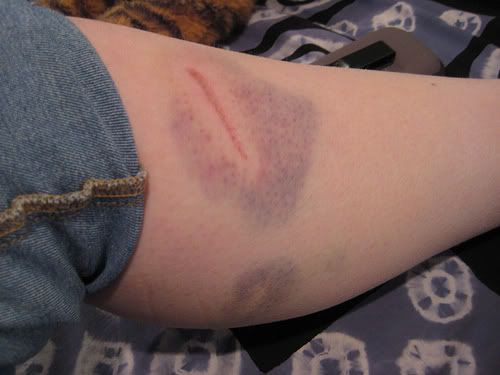 As Dog Bite Prevention Week concludes I thought you might be interested in two recent studies.
As Dog Bite Prevention Week concludes I thought you might be interested in two recent studies.
The Herron study found that the use of aversive methods (aka more traditional methods of training) is not such a good idea.
Funny, many of us keep saying that but it is amazing to still meet with resistance from clients and those who are not willing to try more modern methods.
It was not a surprise that those who used traditional confrontational training methods with dogs that had a history of aggressive tendencies were more likely to trigger aggression from those dogs.
If you are interested in reading these, and I encourage you to do so, so please check out the following links:
Herron M.E., Shofer, F.S. and Reisner, I.R. (2009). Survey of the use and outcome of confrontational and non-confrontational training methods in client-owned dogs showing undesired behaviors. Applied Animal Behavior Science 117:47-54.
Hiby EF, Rooney NJ, Bradshaw JWS. (2004). Dog training methods: Their use, effectiveness and interaction with behaviour and welfare. Animal Welfare 13:63-69.
Just what training methods trigger aggressive behavior?
Direct confrontation methods found to trigger dog aggression include:
- the alpha roll,
- pushing the dog down into a lying position,
- forcibly pulling the dog down with the leash,
- hitting or kicking the dog,
- jabbing the neck,
- using a prong or choke collar,
- using the leash for corrections,
- the use of a muzzle,
- forcible removal of an object from a dog’s mouth,
- a scruff shake (grabbing the dog by the scruff of the neck),
- using a shock collar,
- and rubbing the dog’s nose in soiled areas.
The findings should be no surprise: “such interactions create a substantial risk for owners.”
Hiby et al surveyed training methods used by pet owners and found that “punishment was associated with an increased incidence of problematic behaviors” and therefore “positive training methods may be more useful to the pet-owning community.”
I prefer to use the term “modern training methods” versus positive training…but semantics sometimes get in the way.
If you want to read a couple of posts discussing this matter I suggest checking out the Milligan’s great summary or at the Dog Behavior Blog.
As always, I am interested in hearing what you have to say on this matter–just comment below.


